Understanding battery energy storage systems (BESS): A game-changer for modern energy needs
As the world increasingly shifts toward renewable energy sources like solar and wind, energy storage solutions have become integral to balancing supply and demand. Battery Energy Storage Systems (BESS) capture and store electricity—whether from renewables or off-peak grid power—so it can be used or sold back to the grid during peak demand. Beyond simple energy storage, BESS solutions provide significant benefits to consumers, industries, and utility grids alike. Let’s explore what BESS is all about and see why it’s so transformative.
What is BESS?
A Battery Energy Storage System (BESS) is designed to store electrical energy for later use. It can:
- Capture excess energy from renewable sources like solar and wind.
- Store grid power at off-peak times when electricity is cheaper.
- Release stored energy back into the grid or use it on-site when demand (and prices) peak.
This storage capability brings much-needed stability to grids, especially those heavily reliant on intermittent renewable sources. By storing energy when it’s abundant and inexpensive, BESS can help lower overall energy costs, stabilize electricity supply, and enhance the reliability of power systems.
Key benefits of BESS
1. Increased self-consumption & reduced energy costs
One of the main advantages of BESS is cost efficiency. Through a process often called “energy arbitrage,” you can store electricity when prices are low (often at night or when renewables are generating more power than needed) and use or sell it when prices are high. This strategic shift helps reduce reliance on costly peak-time electricity and lowers overall energy bills.
2. Minimize electricity bills via energy trading
With an intelligent Energy Management System (EMS) and access to dynamic electricity pricing (like day-ahead EPEX markets), consumers can:
- Store excess PV generation for later use.
- Buy low and sell high—purchase power when it’s cheaper and store it, then sell back or use it during peak price periods.
For actual dynamic pricing information in the Netherlands and other EU regions, you can consult:
- NL Day-Ahead Prices
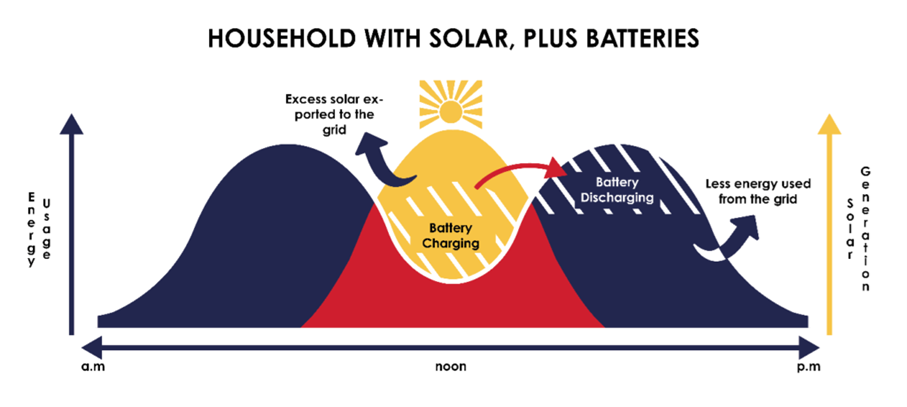
3. Frequency control & imbalance market trading
BESS plays a crucial role in frequency control and stabilizing the power grid. Batteries can rapidly adjust their charge/discharge rates to match fluctuations in power demand. This ability is particularly valuable in maintaining grid frequency and participating in the imbalance market.
- Through dynamic frequency response contracts (FCR), operators can trade energy in near real-time to capitalize on each 15-minute pricing interval.
- For instance, the Actual Imbalance NL Prices or the EU Imbalance Prices give real-time price signals that well-equipped EMS can react to in milliseconds.
4. Peak shaving
In peak shaving, a BESS discharges when your electricity consumption might exceed your contracted grid capacity, preventing high demand charges and costly connection upgrades. Once the load decreases, the battery recharges, allowing you to continue energy-intensive activities even on smaller grid connections.
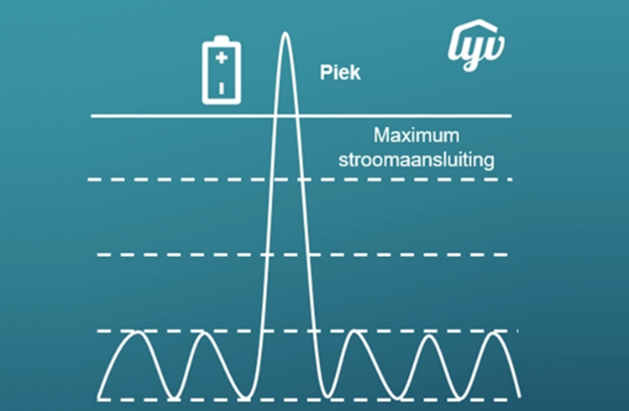
5. Reduced grid dependency
By sourcing and storing power during off-peak times, BESS makes you less vulnerable to peak-demand charges, grid stress, and outages. In residential settings, critical loads can be maintained during blackouts, ensuring essential appliances and systems keep runnin.
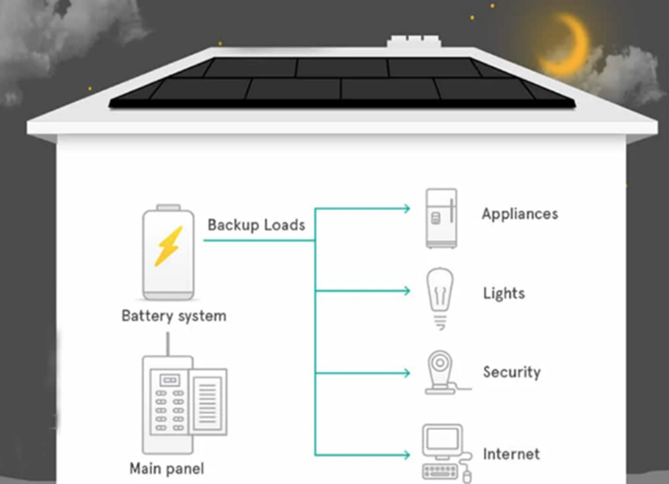
Introducing Huawei RESS (Residential Energy Storage System)
If you’re looking for a cutting-edge home energy storage solution, Huawei’s Smart String Energy Storage System LUNA2000-7/14/21-S1 stands out with its:
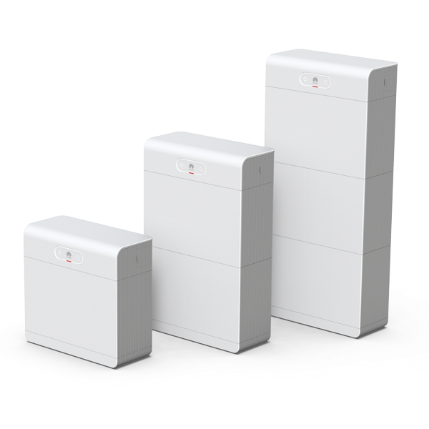
- Enhanced energy utilization: Delivers up to 40% more usable energy, offering a 15-year service life.
- Adaptability to extreme temperatures: Operates efficiently from –20°C to +55°C, aided by intelligent temperature regulation.
- Elegant and quiet design: Whisper-quiet at 29 dB, aesthetically pleasing with capsule-shaped atmosphere lights and artistic grilles.
- Robust safety measures: Includes 5-layer safety protection with top-grade LFP cells, active isolation, IP66 waterproofing, and intelligent fire suppression.
- Efficient charge/discharge: Each battery module can charge/discharge at 3.5 kW, supporting up to 10.5 kW per string, managed at the module level.
- Intelligent management: The Fusion Solar app provides a detailed view of energy flow. EMMA (Energy Management Assistant) integrates PV, battery storage, and smart charging for optimal power solutions.
This system excels in residential applications, offering both performance and design that blend seamlessly into modern homes.
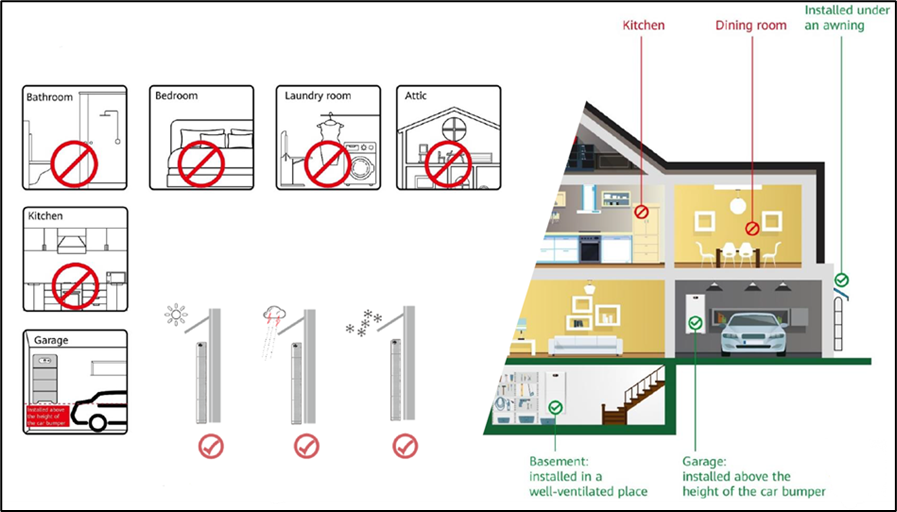
Huawei BESS for Commercial & Industrial Applications
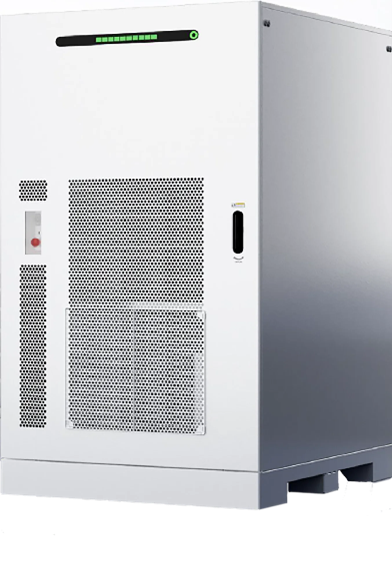
For larger-scale energy needs, Huawei now offers the LUNA2000–215 series, a liquid-cooled Battery Energy Storage System designed for both on-grid and off-grid scenarios. The advanced cooling technology ensures efficient thermal management, prolonging battery life and improving overall system performance.
Key Features
- High-power inverter: Delivers reliable performance suited for commercial and industrial demands.
- Liquid cooling: Maintains optimal operating temperatures, reducing thermal stress and enhancing longevity.
- Modular scalability: Allows businesses to tailor the system from an initial 215 kWh to larger multi-string configurations.
- Deep cycling capability: Achieves a 100% Depth of Discharge (DoD) for maximum usable energy.
- Long lifespan: Backed by an extended warranty, ensuring consistent performance over thousands of charge-discharge cycles.
- Advanced safety & easy O&M: Incorporates robust fire protection, automated fault detection, and straightforward maintenance procedures.
Ideal for C&I environments
This next-generation solution is perfect for organizations seeking to:
- Maximize self-consumption of on-site renewable energy.
- Minimize or avoid costly grid expansion by effectively managing demand peaks.
- Implement effective peak shaving under time-of-use policies.
- Provide ancillary services and earn additional revenue from the grid.
By integrating smart management, a liquid-cooled design, and top-tier hardware, the LUNA2000–215 series offers a dependable, scalable option for commercial and industrial energy storage.
Conclusion: empower your future with BESS
Battery Energy Storage Systems are revolutionizing how we produce, store, and consume electricity. From slashing energy bills and ensuring grid stability to providing backup power during outages, a well-chosen BESS can significantly enhance both residential and commercial energy strategies.
Interested in learning more? Visit the SolarToday website
Embrace the future of energy: combine renewables with intelligent storage solutions and take control of your power consumption, costs, and sustainability goals. Whether for home or business, BESS is the key to a more reliable, efficient, and green energy landscape.
 Large stock of systems & materials
Large stock of systems & materials